Karniyarik is a delicious Turkish stuffed aubergine dish. This recipe is simple to make, and a true family favourite for many Turks. Serve it with Turkish rice and a salad, and I ensure you the dinner table will be smiles all around.
“The area in which the Turkish cuisine is indisputably superior to all others, is its vegetable dishes.” Such begins the chapter on vegetable dishes in the cookbook Timeless Tastes, a wonderful introduction to Turkish food culture.
The dishes included in the chapter may, however, cause a lot of confusion to Westerners.
It begins with mixed vegetable casserole with chicken, then proceeds to artichokes with lamb and purslane with minced meat. Indeed, only four of the thirteen recipes in the chapter can be classified as “vegetarian”. How can this be?
While they’ve long been accustomed to eating a lot of vegetables (and, indeed, vegetarian dishes), the concept of vegetarianism or veganism is novel in Turkish cuisine. Meat is commonly used to add flavour to vegetable dishes.
My partner’s grandmother, for example, would add a tablespoon or so of minced meat to almost anything she was cooking. Indeed, the authors, later in the introduction, suggest that “Turkish cuisine could do with a few more meatless hot vegetable dishes”.
Perhaps this is why so many Turks don’t understand the concept of vegetarianism. Upon learning there’s a vegetarian among them, many will happily and confidently serve lentil soup made on chicken stock, followed by a bean stew with small pieces of meat.
Instead, Turkish cuisine embodies the more modern way of cooking vegetable forward. Let the vegetables take centre stage, without forcing yourself to omit the meat at all costs. The meat will instead have to settle for a supporting role.
The vegetable chapter of the book concludes with a karniyarik recipe.
What is karniyarik?
Karniyarik is Turkish style aubergines stuffed with a delicious meat tomato sauce. It’s one of the true classics of Turkish home cooking – a dish that many a Turk long for the most when they are far away from their mother’s kitchen. You need only a single taste to understand why.
The word itself is a combination of karnı, meaning “belly”, and yarık, meaning “split”. The name is a reference to how the aubergine is split down the middle like a baguette, then stuffed.
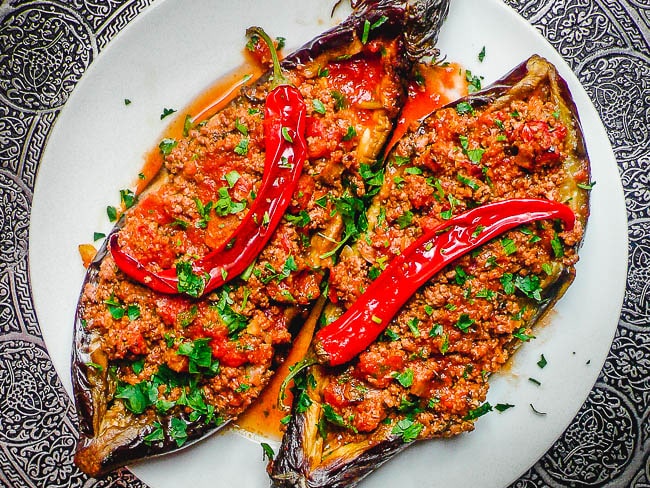
It combines a holy trinity you’re probably already familiar with from delicious dishes such as moussaka, whether the Greek or the Turkish variety: Aubergine (eggplant, if you’re American), tomato and minced (or finally chopped) meat.
Karniyarik is an oturtma type dish – a family of dishes of vegetables fried in olive oil, then stuffed with meat and cooked until tender. It’s always served hot as a main course, and related to Turkish style moussaka.
In Turkish cuisine, you’ll also find a vegan version of stuffed aubergine. While in many ways similar, they are in fact from a different part of the cuisine. While karniyarik is an oturtma, a family of dishes of vegetables fried in olive oil, then stuffed with meat and served hot, imam bayildi is a zeytinyağlı. These are vegetable dishes braised in plenty of olive oil, typically served at room temperature as one of several dishes at the beginning of the meal.
They are both delicious and among the most famous dishes of the Turkish kitchen. I certainly recommend trying them both!
How to prepare karniyarik
Making Turkish style stuffed aubergine is quite simple, but requires a fair bit of that crucial ingredient many try to avoid at all costs: Time. When making karniyarik, it’s crucial to give it enough time over a low heat for the aubergines to turn meltingly soft.
In the past, they achieved this consistency by keeping it in a covered pan over a low heat. Today, most people accept that domestic ovens are an improvement to be taken advantage of, and bake their karniyarik in the oven. This makes it much easier to cook evenly. Plus, you don’t need to constantly watch it to ensure it doesn’t burn!
Needless to say, your choice of aubergine/eggplant matters when making this dish. While any style aubergine can be used, it’s best to use the longer, slim varieties. These cook faster and more evenly. The fatter your aubergine, the longer the cooking time.
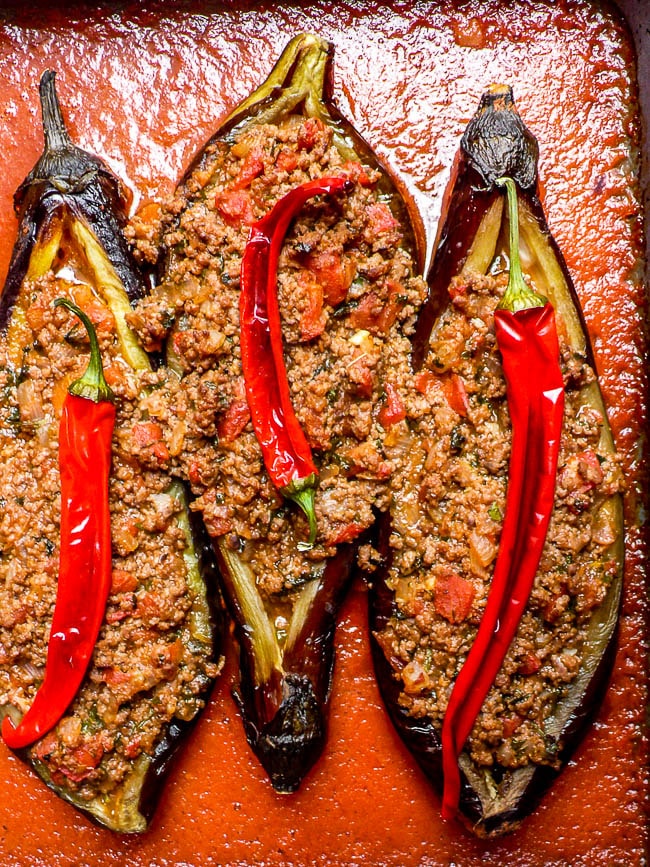
Traditionally, lamb was favoured when making karniyarik, though today most opt for leaner beef. You can also use a combination of the two.
For an even more delicious version, you can use finely chopped meat in place of the minced meat. This will give a more interesting texture and often improve the flavour. Obviously, that also requires more work. I therefore tend to stick with minced meat in everyday cooking.
The rest is quite straightforward, and clearly explained in the recipe method below.
How to serve Turkish stuffed aubergines
Stuffed aubergine Turkish style packs so much flavour, you really need just very simple things alongside.
Like most Turks, I prefer to simply serve it with Turkish style rice and a freshly chopped side salad of whatever’s in season. A large glass of ayran or a generous dollop of Greek or Turkish yoghurt are also excellent. If you want, bulgur wheat pilaf is a good choice in place of rice, though I personally prefer rice here.
This karniyarik recipe serves four generously if serving with sides as suggested.
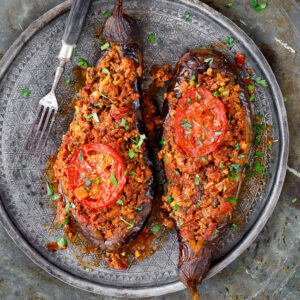
Karnıyarik (Turkish stuffed aubergine with meat)
Ingredients
- 4 aubergine (eggplant)
- 75+30 ml olive oil, I use a mild extra virgin
- 1 large onion, finely chopped
- 4 garlic cloves, finely chopped
- 400 g minced beef, or lamb, or a mixture
- 40 g tomato paste
- 2 tsp dried oregano, Turkish kekik if you can find it
- 1 tsp pul biber (Aleppo pepper)
- 1 tsp sugar
- 400 g tomato, skinned and chopped
- 20 g flat-leaf parsley, leaves only, finely chopped
- 1 large tomato, cut into four slices
- boiling water
- salt and pepper
How I make it
- Preheat the oven to
220 °C.
- Peel off half the skin of the aubergines lengthways, so you end up with a zebra style pattern. Add plenty of salt and leave for at least 10 minutes.
- Rinse the salt off the aubergines and dry well. Place in a roasting tin in which the aubergines have plenty of space to expand. Add 75 ml (5 Tbsp) olive oil, making sure the aubergine flesh is able to absorb most of eat. Roast in the middle of the oven until slightly softened, around 25 minutes, turning once after around 15 minutes.
- Meanwhile, heat a thick bottomed large frying pan over medium heat. Fry the onion in the remaining 30 ml (2 Tbsp) olive oil, stirring regularly, until softened but not coloured, 8-10 minutes.
- Add the garlic to the onion and fry for another 30 seconds or so, stirring constantly. Turn up the heat and add the minced meat as well as some salt and pepper. Fry the meat while chopping it up well.
- When the meat has cooked through, add half (1 Tbsp/20 g) of the tomato paste, oregano, pul biber and sugar. Fry for another minute or two, stirring constantly. Add the chopped tomato and 100 ml (just under ½ cup) water. Mix well and bring to the boil. Turn the heat down to low/medium and leave to simmer for at least 10-15 minutes. Season with salt and pepper to taste, and add more water as you go along if needed. Take off the heat and mix in the flat-leaf parsley.
- Mix the remaining tomato paste (1 Tbsp/20 g) with 200 ml (⅘ cup) boiling water as well as some salt and pepper until you have a runny tomato sauce.
- Cut the aubergines lengthwise as you would a baguette, making sure not to cut completely through and leaving 1-2 cm (½ in) at either end. Gently open the cut, mostly towards the base of the aubergine, giving them a pear-shape. I like using two spoons to do this. You may need to turn every other aubergine by 180 degrees in order for it all to fit in the roasting tin.
- Fill the aubergines with the meat sauce, topping with the slices of tomato. Add the runny tomato sauce to the roasting tin (this will help steam and cook the aubergines).
- Bake in the middle of the oven until the aubergines are completely soft, 30-40 minutes or more. Make sure to check up on them regularly, and covering with baking parchment or foil if the top is starting to brown before the aubergines are cooked through.
- Serve warm with another scattering of flat-leaf parsley, if you like.


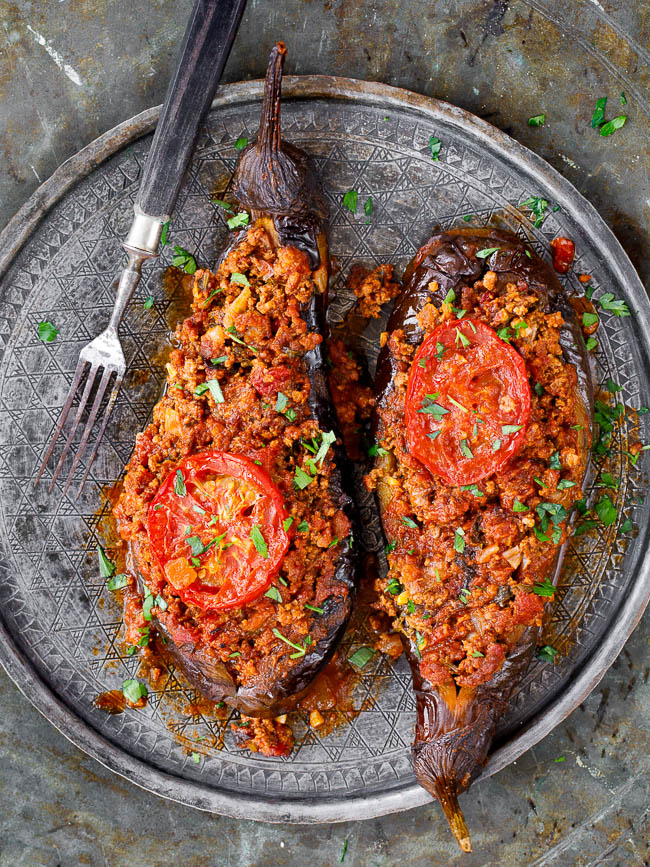


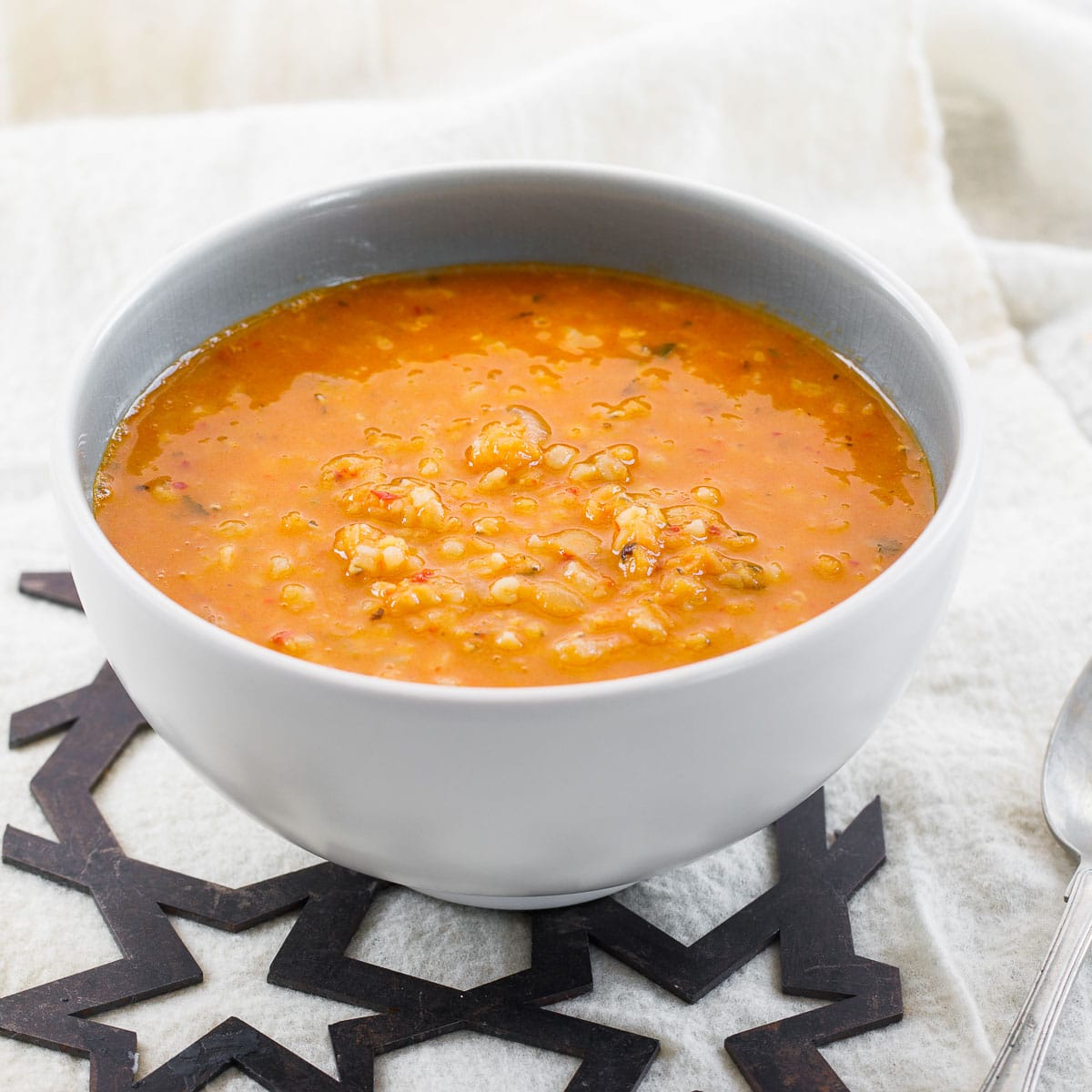
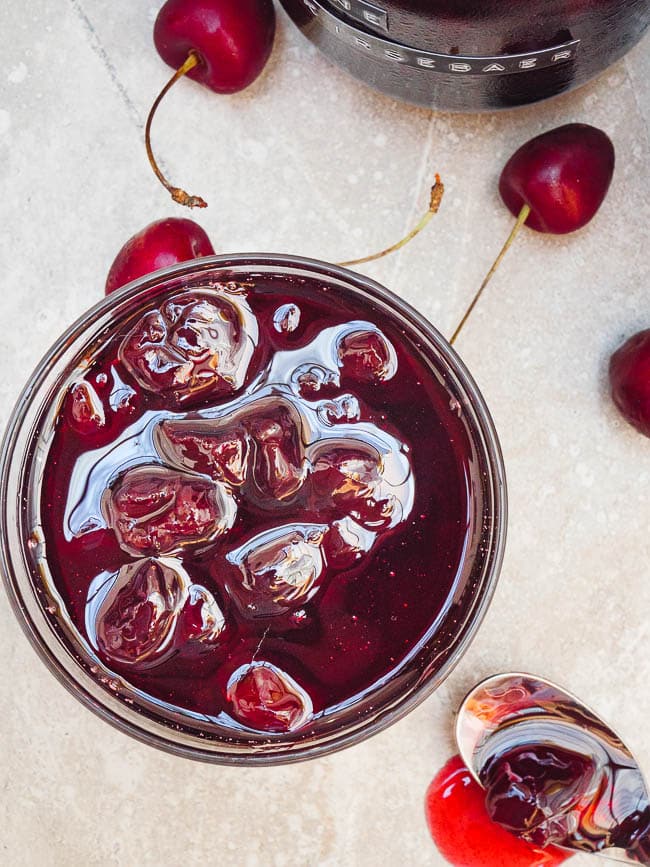
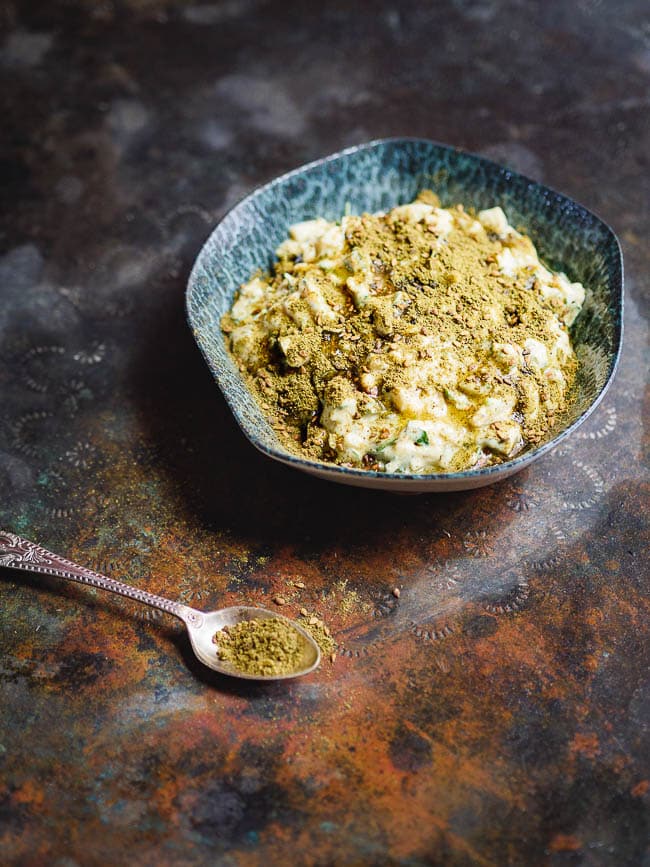
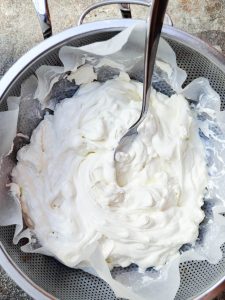

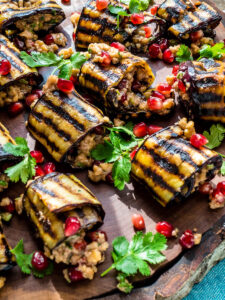




10 responses
Hello Scott! I’m Turkish, but honestly, your recipes are better than my own home cooking.. Do you have a recipe for Yogurt (Yayla) Corbasi? Also, do you have an alternative for this recipe that doesn’t rely on oven baking? My husband and I are students who don’t have an oven. Thank you!
Thank you! I don’t have a recipe for yayla çorbası at this point, but will keep it in mind as I plan future additions! For the karniyarik, you can most certainly use the stovetop instead. Follow the method for imam bayıldı (but ingredients for karniyarik). That’s of course also stuffed aubergines, but a stovetop only recipe.
Hi Vader,
In a book I have about the food of Türkiye the recipe for Stuffed Aubergine has you mixing the scooped out aubergine flesh into the mince mixture. It also adds kasar cheese to the mixture, is this completely wrong or just a regional variation?
Many thanks Scott
Hi, Scott! That’s a variation and nothing wrong with either approach. Both are reasonably common, though the vast majority of versions I’ve seen don’t mix the aubergine and meat (negative value add for extra work, if you ask me). Adding kasar cheese has become increasingly widespread, probably influenced by the Western/American/social media “melted cheese on everything”, though most Turks would probably agree that a “proper” karnıyarik, to the extent such exists, is without cheese.
I made this for my Mum who was staying with my husband & I. A delicious dish, even better a day or so later when the flavours had melded
Thanks. Anne
Hi Just back from Turkey and had this and other absolutely delicious food. Can I ask please, when you take the aubergines out the first time do you take out the flesh and mix it with the sauce before filling the shell as? Thanks. Anne
Hi! No, it’s not customary to mix the aubergine flesh with the sauce (though you certainly can if you want to). I just put the filling on top/inside the opening.
Good evening,
Having tried Karniyarik recently at a Turkish restaurant in Liverpool (and loving it), I would like to make it for myself from your recipe.
However, I have a questiom, if I may …
You state 220 degrees for the oven but is that for a fan oven which is usually 10 degrees lower?
I look forward to your reply.
Kind regards,
Marianne
Hi Marianne,
That is for a regular top and bottom heated oven. If using fan assisted heating, 200 C should be sufficient.
Best of luck, hope you enjoy!
Best, Vidar